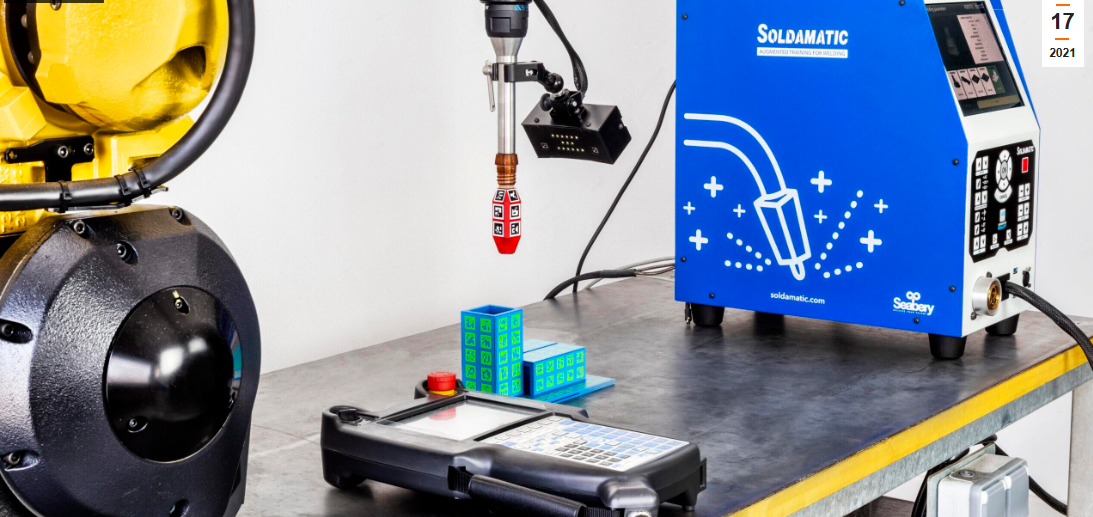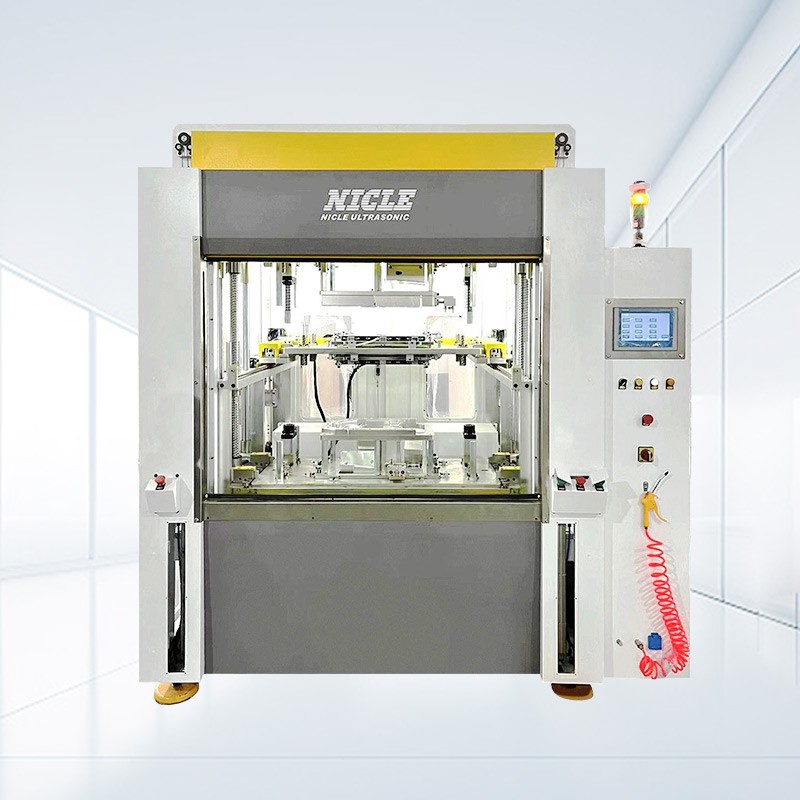GENERAL
Mental health disorders types diagnosis & treatments

Our mental health is just as important as our physical health. Yet, mental health disorders are surprisingly common, affecting millions of people worldwide. These disorders can impact how we think, feel, and behave, making it difficult to navigate daily life. But the good news is there’s hope! In this discussion, we’ll explore the different types of mental health disorders, how they are diagnosed, and the various treatment options available. By understanding these aspects, we can better support ourselves and others on the path to mental well-being.
Anxiety
Excessive concern and fear, as well as associated behavioral abnormalities, are characteristics of anxiety disorders.
Anxiety disorders can take many different forms. These include
- Separation anxiety disorder, which is characterized by excessive fear or anxiety about being away from people with whom the sufferer has a deep emotional bond,
- Generalized anxiety disorder, which is characterized by excessive worry,
- Panic disorder, which is characterized by panic attacks, and others.
Bipolar Disorder
The patient experiences manic symptoms along with depressive episodes. In addition to euphoria or irritation, increased activity or energy, other symptoms like talkativeness, racing thoughts, elevated self-esteem, decreased sleepiness, distractibility, and impulsive behavior.
Schizophrenia
The major change in the thinking, feeling, and behavior of an individual is schizophrenia.
The main symptoms are highly disorganized behavior, extreme agitation, persistent delusions, disorganized thinking, and hallucinations. The person who has schizophrenia does not have proper cognitive functioning.
Neurodevelopment Disorders
Behavioral and cognitive disorders known as neurodevelopmental disorders appear during the developing stage. These are characterized by severe challenges to the acquiring and performing of certain intellectual, motor, linguistic, or social skills.
Depression
Mood swings and transient emotional reactions to day-to-day obstacles are not the same as depression. A depressive episode lasts at least two weeks and is characterized by the individual experiencing a depressed mood (feeling hopeless, agitated, and empty) or a lack of enjoyment or interest in activities for most of the day, almost every day.
There are other symptoms like sleeplessness, irritation, low concentration, extreme guilt low self-esteem, etc.
Eating Disorders
Anorexia nervosa and bulimia nervosa are two examples of eating disorders that are characterized by aberrant eating patterns, obsession with food, and significant body shape and weight issues. Major danger or harm to one’s health, major distress, or severe functional impairment are the outcomes of the symptoms or actions.
Anorexia nervosa is linked to early mortality via suicide or medical issues, and it often manifests during adolescence or early adulthood.
Diagnosis of Mental Health Disorders
It’s crucial to have a diagnosis from a medical professional with expertise in behavioral health issues. To get the appropriate therapy, you need a precise diagnosis.
A medical professional will assess your mental health by closely examining your symptoms. Make sure your healthcare practitioner is aware of below situation:
- If any particular triggers increase your mental illness.
- Whether your mental health issues are sporadic or persistent (continuous).
- the moment you become aware of changes in your mental state.
Medical tests are not available to identify mental diseases. To rule out further disorders that may have an impact on mental health, however, your healthcare practitioner may do tests on you, such as blood tests or imaging scans.
Treatment
Medication:
Antidepressants and antipsychotics, for example, are effective medications for treating certain mental diseases. These medications alter the chemistry of your brain to reduce symptoms. You must take your prescription exactly as prescribed by your doctor.
Brain Stimulation Therapies:
Not every condition gets better with medicine. Your doctor could suggest brain stimulation treatments if that’s the case. Your brain’s nerves and other cells process chemicals and react to stimuli differently as a result of these therapies. Examples include transcranial magnetic stimulation (TMS) and electroconvulsive treatment.
Psychotherapy:
You may manage the symptoms of an illness and overcome its problems by speaking with a mental health expert. Psychotherapy can take place in a group environment or one-on-one with a medical professional. You can also consider a drug addiction hotline where you will get the best help in a homely atmosphere. One type of psychotherapy is called cognitive behavioral therapy (CBT) that can be used for a psychotic break. Its main goal is to assist you in altering unfavorable thought and behavior patterns. What is a psychotic break? A psychotic break, also known as a psychotic episode or psychotic episode, refers to a period of time when an individual experiences a break from reality.
Alternative Therapies
Alternative treatments have the potential to improve some mental diseases, such as depression. Herbal treatments, massage, acupuncture, yoga, and meditation are a few examples. Consult your physician before using any supplements or natural therapies. As their use may have some effect on your normal medication.
GENERAL
Know Why Qualitative Market Research Is The Secret To Understanding Your Audience

In today’s dynamic and competitive business landscape, understanding your audience is crucial for success. To gain a deep understanding of your target market, qualitative market research emerges as the secret weapon. This article aims to explore the significance of qualitative market research and how it can provide profound insights into your audience’s preferences, behaviors, and needs.
What is Qualitative Market Research?
Qualitative market research is a method of gathering insights and understanding the motivations and opinions of consumers. It involves collecting non-numerical data through various techniques such as interviews, focus groups, and observations. Unlike quantitative research, which focuses on numerical data, qualitative research delves into the qualitative aspects that drive consumer decision-making.
The Power of Qualitative Market Research
Qualitative market research offers numerous advantages that contribute to a deeper understanding of your audience. Let’s explore some of the key benefits:
- Uncover Unmet Needs:
Qualitative research helps identify unmet needs and gaps in the market. By engaging directly with consumers and exploring their experiences, desires, and pain points, businesses can discover opportunities to develop innovative products or services that cater to these unfulfilled needs.
- Understand Consumer Behavior:
Qualitative research provides insights into consumer behavior, allowing businesses to understand why customers make certain choices. By analyzing their motivations, preferences, and attitudes, companies can tailor their marketing strategies and messaging to effectively resonate with their target audience.
- Gain Competitive Edge:
By conducting qualitative research, businesses can gain a competitive edge by understanding their audience better than their competitors. This knowledge enables companies to develop unique value propositions, differentiate themselves from the competition, and create offerings that truly meet their customers’ needs.
- Enhance Product Development:
Qualitative research is invaluable in developing new products or improving existing ones. By involving consumers in the research process, businesses can gather feedback and suggestions that guide product improvements. This approach ensures that the final product aligns with the desires and expectations of the target audience.
Implementing Qualitative Market Research
To successfully implement qualitative market research, it is important to follow these key steps:
- Define Research Objectives:
Clearly outline the objectives and goals of the research. Identify the specific aspects of consumer behavior or market trends that need to be explored to gain a comprehensive understanding of your target audience.
- Recruit Participants:
Carefully select participants who represent your target market. Consider demographics, psychographics, and other relevant factors to ensure diversity and representativeness.
- Choose Appropriate Methodology:
Select the research techniques that align with your research objectives. In-depth interviews, focus groups, or ethnographic research may be suitable depending on the nature of the research.
- Conduct the Research:
Execute the research plan by engaging with participants and collecting data. Ensure that the research environment is conducive to open and honest responses.
- Analyze and Interpret Data:
Thoroughly analyze the collected data, looking for patterns, themes, and insights. Interpret the findings in the context of your research objectives to unlock their full potential.
- Apply Insights:
Utilize the insights gained from qualitative research to inform business decisions. Develop targeted marketing campaigns, refine product development strategies, and enhance customer experiences based on the identified needs and preferences of your audience.
Conclusion
Qualitative market research serves as a powerful tool for understanding your audience on a deeper level. By uncovering unmet needs, understanding consumer behavior, gaining a competitive edge, and enhancing product development, businesses can create strategies that resonate with their target market. Through techniques such as in-depth interviews, focus groups, and ethnographic research, qualitative market research provides valuable insights that quantitative research alone cannot capture. By embracing qualitative market research, businesses can unlock the secret to understanding their audience and drive success in today’s competitive marketplace.
GENERAL
The Future of Hot Plate Welding: Emerging Trends and Innovations

Hot plate welding is a widely used process for joining thermoplastic components, particularly in industries like automotive, medical, and consumer goods. As technology advances, new trends are shaping the future of this process, improving efficiency, precision, and sustainability.
Innovations such as automation, artificial intelligence (AI), and advanced materials are transforming hot plate welding solutions, making them more adaptable to modern manufacturing needs.

This article explores the latest trends and advancements in hot plate welding plastic solutions, highlighting how they are redefining the way industries approach plastic joining.
1. The Rise of Automation in Hot Plate Welding
Automation is playing a crucial role in enhancing hot plate welding equipment solutions. By integrating robotic systems and smart controls, manufacturers can achieve greater precision, consistency, and efficiency in the welding process.
Key Benefits of Automation:
- Increased Production Speed – Automated welding systems reduce cycle times and enhance throughput.
- Consistent Weld Quality – Eliminates human errors and ensures repeatable results.
- Reduced Labor Costs – Minimises the need for manual intervention, allowing skilled workers to focus on higher-value tasks.
Many manufacturers are investing in fully automated hot plate welding machine solutions that integrate sensors and real-time monitoring to adjust welding parameters dynamically. This trend is making the process more reliable and cost-effective for large-scale production.
2. AI and Machine Learning in Hot Plate Welding
Artificial intelligence (AI) and machine learning are transforming hot plate welding of plastic parts solutions by enabling predictive maintenance, real-time quality control, and process optimization.
How AI is Impacting Hot Plate Welding:
- Defect Detection – AI-powered vision systems can detect imperfections in welds and make adjustments in real time.
- Predictive Maintenance – Machine learning algorithms analyze welding equipment performance and predict potential failures before they occur.
- Adaptive Welding Parameters – AI-driven systems can modify welding settings based on material properties and environmental conditions.
These innovations reduce downtime and improve the overall efficiency of hot plate welding solutions, leading to higher-quality products and lower operational costs.
3. Advancements in Materials for Hot Plate Welding
The development of new thermoplastic materials is influencing the evolution of hot plate welding plastic solutions. Manufacturers are exploring high-performance polymers that offer better heat resistance, durability, and sustainability.
New Material Trends:
- Bio-Based and Recyclable Plastics – As sustainability becomes a priority, industries are shifting toward eco-friendly thermoplastics that can be welded efficiently.
- High-Temperature Resistant Polymers – Advanced plastics with improved thermal stability are expanding the range of applications for hot plate welding.
- Multi-Material Welding – Innovations in material science are enabling the welding of dissimilar plastics, broadening design possibilities.
These material advancements are pushing the boundaries of what can be achieved with hot plate welding machine solutions, opening up new possibilities in product development.
4. Enhanced Precision Through Digital Twin Technology
Digital twin technology is revolutionising hot plate welding equipment solutions by providing a virtual representation of the welding process. This technology allows manufacturers to simulate and optimise welding conditions before actual production.
Benefits of Digital Twin Integration:
- Process Optimisation – Engineers can fine-tune welding parameters digitally to achieve the best results.
- Reduced Waste – Minimises trial-and-error welding, leading to less material wastage.
- Remote Monitoring and Control –Allows real-time tracking of welding performance and troubleshooting from any location.
This technology is particularly useful in car plastic tank hot plate welding, where precision and quality control are paramount. Car plastic tank hot plate welding is a great example of how digital advancements are improving welding reliability and efficiency.
5. Sustainability and Energy Efficiency in Hot Plate Welding
As industries focus on reducing their environmental impact, hot plate welding plastic solutions are evolving to be more energy-efficient and sustainable.
Sustainable Innovations in Hot Plate Welding:
- Energy-Efficient Heating Systems – New heating elements consume less power while maintaining optimal welding performance.
- Emission Reduction Technologies – Improved ventilation and filtration systems reduce harmful emissions during welding.
- Recyclable Welding Fixtures – The use of recyclable and reusable materials in welding fixtures minimises industrial waste.
These sustainable practices are making hot plate welding machine solutions more eco-friendly, helping manufacturers comply with environmental regulations while reducing costs.
6. The Integration of IoT in Hot Plate Welding Machines
The Internet of Things (IoT) is enhancing hot plate welding equipment solutions by connecting machines to digital networks, allowing for real-time data exchange and remote management.
IoT Applications in Hot Plate Welding:
- Remote Diagnostics – IoT-enabled machines can detect performance issues and send alerts before failures occur.
- Cloud-Based Data Storage – Welding data can be stored and analysed to improve production efficiency.
- Smart Control Systems – Operators can adjust welding parameters remotely using mobile or desktop applications.
With IoT integration, manufacturers can achieve greater flexibility and control over their hot plate welding solutions, leading to improved productivity and reduced downtime.
7. The Future of Customisation in Hot Plate Welding
Customisation is becoming increasingly important in hot plate welding of plastic parts solutions, as industries demand tailored welding systems for unique applications.
Customisation Trends:
- Modular Welding Systems – Machines designed with interchangeable components for different welding applications.
- Adjustable Welding Cycles – Customised settings for varying plastic thickness and material types.
- User-Friendly Interfaces – Intuitive touchscreens and software interfaces simplify operation and training.
Customised welding solutions provide manufacturers with greater flexibility and efficiency in their production lines.
For businesses looking for advanced hot plate welding plastic solutions, it’s essential to choose equipment that aligns with their specific manufacturing needs. Hot plate welding plastic solution options continue to evolve, offering enhanced flexibility and efficiency.
8. The Growing Demand for Hybrid Welding Techniques
Hybrid welding techniques, which combine hot plate welding plastic solutions with other welding methods, are gaining traction.
Popular Hybrid Welding Methods:
- Infrared and Hot Plate Welding – Uses infrared heating for preheating before applying traditional hot plate welding.
- Ultrasonic and Hot Plate Welding – A combination of ultrasonic energy and heat for improved bonding strength.
- Laser-Assisted Hot Plate Welding – Enhances precision by integrating laser energy with hot plate welding.
These hybrid techniques improve weld strength, reduce cycle times, and expand the possibilities of hot plate welding equipment solutions.
9. Global Market Trends and Future Projections
The demand for hot plate welding machine solutions is expected to grow, driven by advancements in automation, sustainability, and material science.
Industry Projections:
- Automotive Sector Growth – Increasing use of thermoplastic components in electric vehicles (EVs) will drive demand for hot plate welding.
- Medical Industry Expansion – Precision welding is critical for medical devices, leading to higher adoption of AI-powered welding machines.
- Smart Manufacturing Adoption – More manufacturers will integrate digital and IoT-based welding solutions for better efficiency.
As industries continue to evolve, hot plate welding of plastic parts solutions will remain a cornerstone of modern manufacturing, adapting to new technologies and market demands.
Conclusion
The future of hot plate welding solutions is being shaped by automation, AI, advanced materials, and sustainability efforts. As manufacturers seek to improve efficiency, reduce costs, and enhance weld quality, new technologies are driving innovation in hot plate welding plastic solutions.
From IoT-connected machines to hybrid welding techniques, these advancements are redefining how industries approach hot plate welding equipment solutions. By embracing these emerging trends, manufacturers can stay ahead of the competition and optimise their production processes for the future.
GENERAL
The Future of Urban Living: Designing Homes for Today’s City Dwellers

Urban environments are experiencing rapid growth, forcing a rethinking of residential development. As people migrate to cities, the pressure to create sustainable spaces intensifies. Urban living is more than just a place to live; it embodies a lifestyle filled with cultural richness and opportunities. To satisfy the many demands of city people, developers, and architects must strike a balance between innovation and pragmatism. Choosing an urban residence involves finding harmony between convenience and community, enhancing the quality of life. Options like Charlotte Homes For Sale offer modern, strategic solutions in dynamic metropolitan environments, showcasing how contemporary design integrates with city life.
Adapting to Smaller Spaces
Urban living presents the challenge of optimizing limited spaces, making innovative design essential. Even small apartments can become functional havens using multipurpose furniture like sofa beds and foldable desks. The trend of “micro-living” embraces simplicity and design tricks to create the illusion of spaciousness, showing that big city dreams can fit in small packages.
Importance of Sustainable Living
Environmental sustainability is now fundamental in modern housing design, especially in urban areas where conserving resources is crucial. Developers are increasingly using eco-friendly materials and technologies to reduce the environmental impact of buildings, leading to lower energy costs and savings for residents. While green roofs offer nature and insulation in urban environments, green features like solar panels and rainwater harvesting are increasingly commonplace.
The Role of Technology in Urban Homes
Technology has transformed how we interact with homes, especially in urban areas. Smart home systems, like automated lighting, climate control, and security, are now essential for modern living. These advancements enhance the efficiency of living spaces, allowing for easy adjustments to personal preferences. For instance, you can adjust the thermostat with a voice command or secure your home remotely via a smartphone. This integration improves convenience and boosts security, enabling residents to manage their environments easily.
Community-Driven Urban Design
The concept of community is central to modern urban planning. Residential projects now include communal spaces promoting interaction and fostering residents’ belonging. Planners recognize that social connections enhance well-being and resilience. Community gardens, shared terraces, and recreational areas offer opportunities for socializing and building stronger ties. This inclusive approach encourages diversity and collaboration, which is vital for vibrant urban cultures and a cohesive urban fabric.
Affordability and Access in the Urban Housing Market
Cities offer numerous opportunities, but housing costs present a significant challenge. Balancing affordability and quality is essential in urban housing policies. Innovative financial solutions and inclusive policies are fostering equitable access to homes. Efforts to incentivize developers to include affordable units and explore creative financing options aim to make homeownership accessible to a wider demographic. By promoting inclusivity, cities strive to maintain diversity and ensure quality urban living for all.
Trends in Urban Aesthetics and Design
Urban housing aesthetics are evolving, reflecting cultural shifts and technological advancements. The blend of minimalist designs and industrial elements highlights the uniqueness of urban environments. Interiors often showcase exposed concrete and brick alongside sleek finishes. Diverse cultural influences add vibrant colors and textures to residential spaces.
Future Prospects for Urban Living
As urbanization advances, city living evolves with futuristic features like autonomous systems that enhance our interaction with homes. The COVID-19 pandemic has shifted priorities toward resilient infrastructure and adaptable designs. Speculations suggest that virtual reality may create open-space experiences within smaller living areas. These innovations aim to redefine domestic life in cities, making living environments more versatile and human-centric in the future.
-

 GENERAL1 year ago
GENERAL1 year agoDiscovering the Artistic Brilliance of Derpixon: A Deep Dive into their Animation and Illustration
-

 Posts1 year ago
Posts1 year agoSiegel, Cooper & Co.
-

 Lifestyle1 year ago
Lifestyle1 year agoPurenudism.com: Unveiling the Beauty of Naturist Lifestyle
-

 Lifestyle1 year ago
Lifestyle1 year agoBaddieHub: Unleashing Confidence and Style in the Ultimate Gathering Spot for the Baddie Lifestyle
-

 HEALTH1 year ago
HEALTH1 year agoTransformative Health Solutions: Unveiling the Breakthroughs of 10x Health
-

 Entertainment1 year ago
Entertainment1 year agoGeekzilla Podcast: Navigating the World of Pop Culture, Gaming, and Tech
-

 Entertainment1 year ago
Entertainment1 year agoKhatrimaza Unveiled: Exploring Cinematic Marvels and Entertainment Extravaganza
-

 BUSINESS1 year ago
BUSINESS1 year agoUnlocking the Secrets to Jacqueline Tortorice Remarkable Career and Accomplishments
